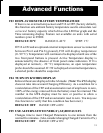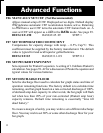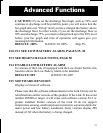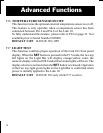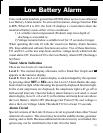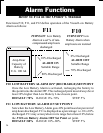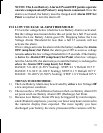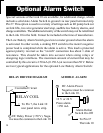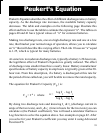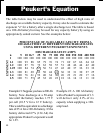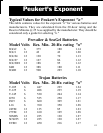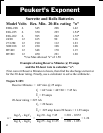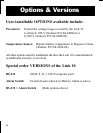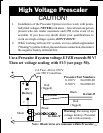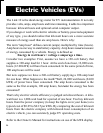
39
Peukert's Equation
Peukert's Equation describes the effect of different discharge rates on battery
capacity. As the discharge rate increases, the available battery capacity
decreases. The table and examples on the following page illustrate this
effect and how to use the table to estimate the exponent "n". The tables on
pages 40 and 41 have typical values of "n" for common batteries.
Making two discharge tests, one at a high discharge rate and one at a low
rate, that bracket your normal range of operation, allows you to calculate
an "n" that will describe this varying effect. The Link 10 uses an "n" equal
to 1.25, which is typical for many batteries.
At some low to moderate discharge rate, typically a battery's 20-hour rate,
the logrithmic effect of Peukert's Equation is greatly reduced. The effect
of discharge rates smaller than this is nearly linear. Battery manufacturer
specifications of battery capacity in amp hours is typically given at the 20-
hour rate. From this description, if a battery is discharged at this rate for
the period of time called out, you will be able to remove the rated capacity.
The equation for Peukert's Capacity (C
p
) is:
By doing two discharge tests and knowing I
1
& I
2
(discharge current in
amps of the two tests), and t
1
& t
2
(time in hours for the two tests) you can
calculate n (the Peukert coefficient). You will need a calculator that has a
Log function to solve the equation above. See example on page 42. After
you solve for your Peukert's coefficient you may enter it using Advanced
Function F8.
C
p
= I
n
t where
log
t
2
- log t
1
log I
1
- log I
2
n =



